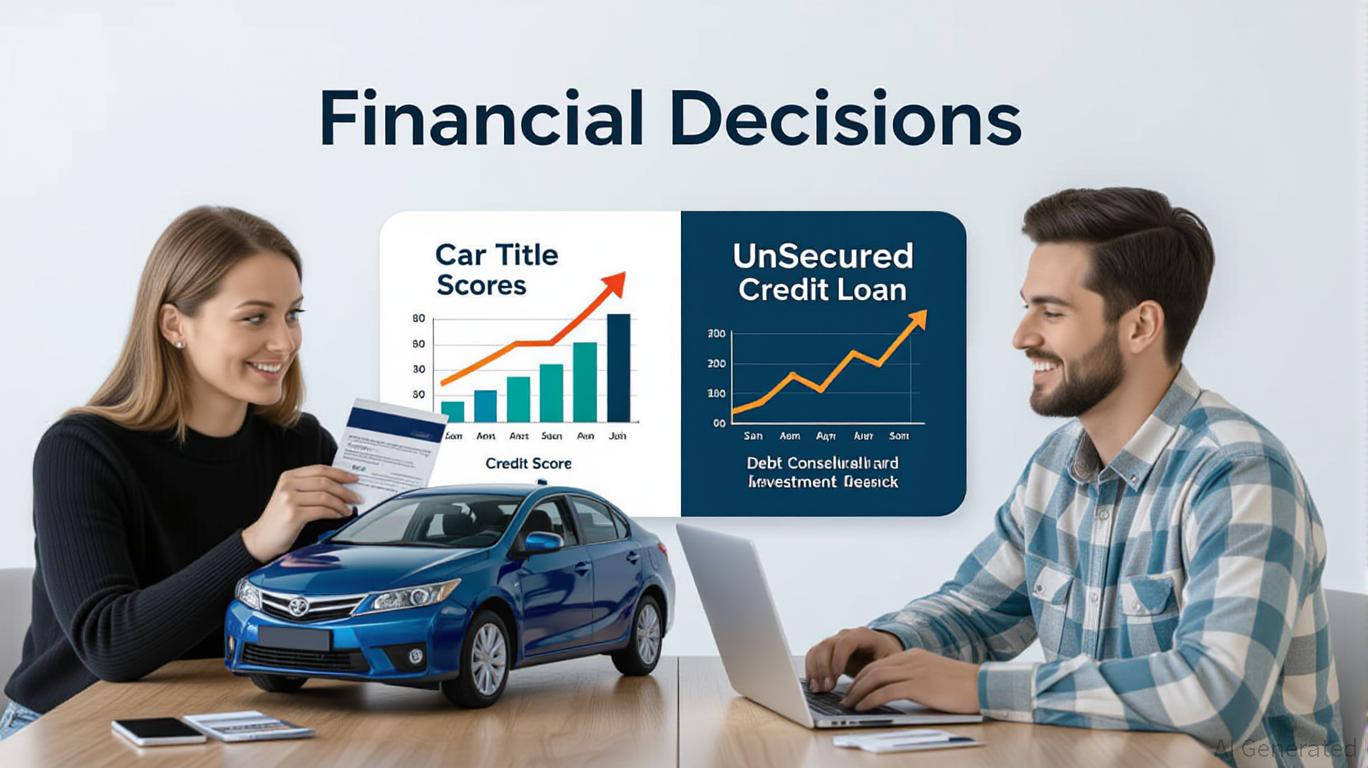
In the evolving landscape of personal finance, the choice between secured and unsecured loans has become a critical decision for borrowers and investors alike. As of Q1 2025, the U.S. personal loan delinquency rate stands at 3.49%, a 6.9% decline from Q1 2024 but still higher than rates for mortgages (1.36%) and auto loans (1.56%). This disparity underscores the need for strategic borrowing, particularly for those seeking to build credit, manage debt, or fund high-impact investments.
Risk Tolerance and Loan Type: A Balancing Act
Secured loans, which require collateral such as a vehicle or home equity, inherently carry lower risk for lenders. This is reflected in their interest rates: secured loans from lenders like OneMain Financial and Best Egg range from 8.99% to 35.99%, compared to unsecured loans, which span 7.49% to 36.00%. The trade-off for lower rates is the risk of losing the collateral if repayment fails. For borrowers with subprime credit (FICO
Unsecured loans, while riskier for lenders, provide flexibility for those with strong credit. Platforms like LightStream and Citi® offer APRs as low as 7.49%, ideal for consolidating high-interest debt or funding projects with predictable returns. However, the absence of collateral means lenders rely heavily on credit scores and income stability. Borrowers with fair credit (FICO 640–699) may find unsecured loans unattainable or costly, with APRs averaging 22.02%.
Credit-Building Potential: Secured Loans as a Foundation
For borrowers aiming to improve their credit profiles, secured loans can be a strategic tool. By making consistent payments on a secured loan, individuals can demonstrate financial responsibility, gradually boosting their FICO scores. This is particularly valuable for those with limited credit history or past defaults. For example, Best Egg’s “Home Fixture Loan” allows borrowers to use home improvements as collateral, offering a pathway to rebuild credit while addressing immediate needs.
Unsecured loans, conversely, are less forgiving for those with poor credit. While fintech lenders like Upstart and LendingClub offer flexible terms, their origination fees (up to 10%) and higher APRs can exacerbate debt. Investors in these platforms should weigh the risk of default—finance companies, which dominate unsecured lending to subprime borrowers, report a 7% delinquency rate, compared to 1% for banks.
Long-Term Financial Outcomes: Aligning Loans with Goals
The choice between secured and unsecured loans should align with long-term financial objectives. For instance:
– Debt Consolidation: Unsecured loans with lower APRs (e.g., Happy Money’s 11.72%–17.99%) can reduce interest costs on credit card debt. However, borrowers must avoid accumulating new debt to prevent a cycle of refinancing.
– High-Impact Investments: Secured loans with favorable terms can fund ventures like home renovations or small business startups. LightStream’s $100,000 unsecured loan limit for top-tier credit scores exemplifies how lenders reward financial discipline.
– Credit-Building: Secured loans, particularly those with no prepayment penalties, allow borrowers to gradually transition to unsecured options as their credit improves.
Actionable Advice for Borrowers and Investors
- Assess Risk Appetite: Subprime borrowers should prioritize secured loans to access lower rates and build credit. Those with prime or super prime scores can leverage unsecured loans for cost-effective borrowing.
- Evaluate Loan Terms: Scrutinize origination fees, repayment timelines, and prepayment penalties. For example, Citi®’s no-fee structure makes it ideal for borrowers seeking to minimize hidden costs.
- Align with Financial Goals: Use secured loans for projects with tangible returns (e.g., home equity improvements) and unsecured loans for debt consolidation or low-risk investments.
- Monitor Credit Health: Regularly check credit reports to ensure timely payments are reported. A 3.49% delinquency rate in 2025 highlights the importance of proactive management.
Conclusion
The decision between secured and unsecured loans is not merely a matter of interest rates but a strategic choice that shapes credit trajectories and financial outcomes. For borrowers, the key lies in balancing risk tolerance with long-term goals—using secured loans as a stepping stone to creditworthiness and unsecured loans to capitalize on favorable market conditions. Investors, meanwhile, should consider the lender’s risk profile: banks and credit unions offer stability, while fintech platforms and finance companies cater to niche markets with higher volatility. In a landscape where personal loan balances exceed $253 billion, informed choices today can unlock significant returns tomorrow.


